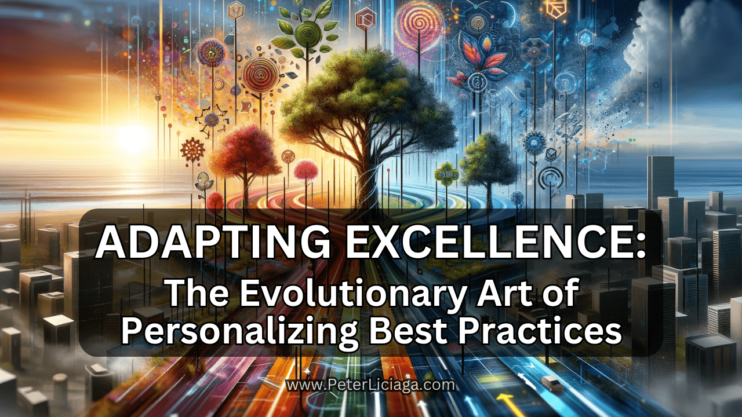Section 4: Innovation and Flexibility: The Core of Modern Best Practices
In today’s rapidly changing world, the concept of best practices is undergoing a significant transformation. No longer can they be viewed as static sets of rules to be rigidly followed. Instead, they must be seen as dynamic guidelines, subject to continuous adaptation and innovation. This section delves into why innovation and flexibility are vital in applying best practices and offers strategies for staying adaptable and innovative in the pursuit of success.
Embracing Change and Innovation
The first step in modernizing best practices is to embrace change and innovation. In a business context, this could mean staying abreast of technological advancements or new market trends. For instance, companies like Apple and Amazon have thrived by not just following industry standards but continually innovating and setting new benchmarks. In personal development, it might involve staying open to new ideas and approaches, constantly seeking to learn and grow.
Adapting to Unique Challenges
Every individual and organization faces unique challenges, making it impossible for a one-size-fits-all approach to be effective. Adapting best practices to these unique challenges is critical. This might mean tweaking a standard business strategy to fit a niche market or customizing a popular productivity method to suit your personal working style. The key is to not take best practices as gospel but as a starting point for developing your own, tailored approach.
Strategies for Staying Adaptable
- Continuous Learning: Keeping skills and knowledge up-to-date is essential. This can be through formal education, online courses, attending workshops, or simply staying informed about industry trends.
- Feedback Loops: Implement systems to regularly gather and analyze feedback. This could be customer feedback for a business or personal feedback from mentors and peers for individual growth.
- Experimentation: Don’t be afraid to experiment. Trial and error can be a powerful way to discover what works best in your specific context.
- Collaboration and Networking: Engaging with diverse groups and networks can provide fresh perspectives and ideas, helping you to adapt and innovate.
Flexibility as a Mindset
Flexibility should be ingrained as a mindset rather than just a practice. It’s about being willing to change direction when something isn’t working and being open to new opportunities and approaches. This mindset can be cultivated by regularly questioning existing methods and being open to different viewpoints.
Balancing Best Practices with Creativity
While it’s important to learn from established best practices, it’s equally vital to add a touch of creativity. This means thinking outside the box and not being afraid to deviate from the norm if it means achieving better results. The most successful individuals and organizations are often those that manage to find a unique approach by combining best practices with innovative thinking.
Conclusion
In summary, best practices in the modern world are not static rules but fluid concepts that require continuous innovation and flexibility. By adapting these practices to unique challenges and maintaining an adaptable and creative mindset, individuals and organizations can not only keep up with the pace of change but also lead the way in their respective fields. The real power of best practices lies in how they are interpreted, adapted, and applied to forge new paths to success.




